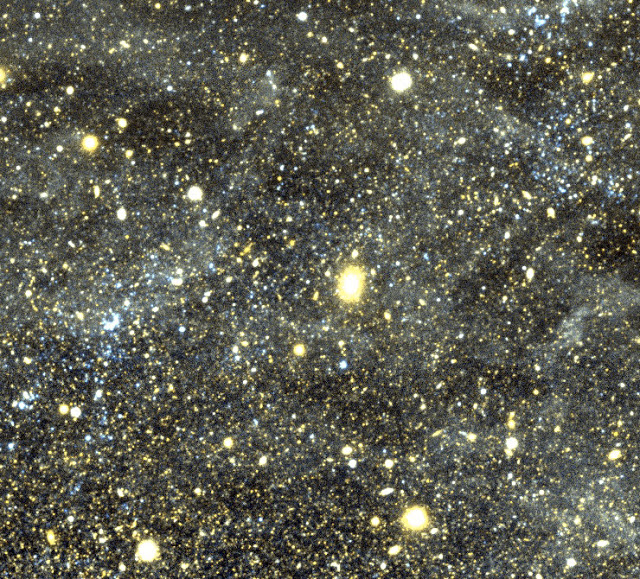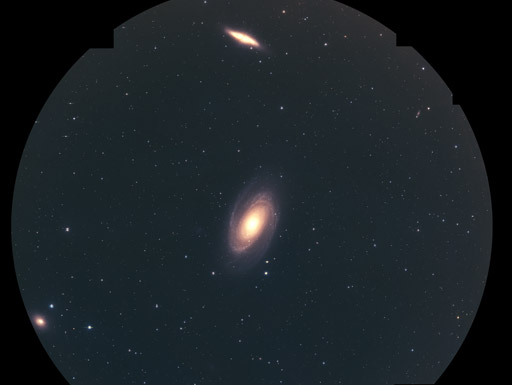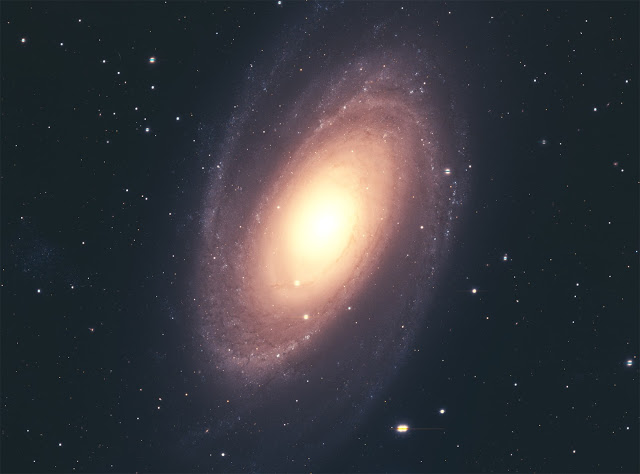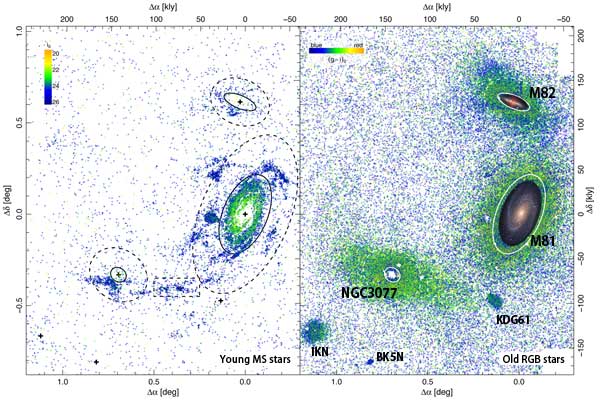| Online: | |
| Visits: | |
| Stories: |

| Story Views | |
| Now: | |
| Last Hour: | |
| Last 24 Hours: | |
| Total: | |
Ghostly Remnants of Galaxy Interactions Uncovered in a Nearby Galaxy Group
Astronomers using the Subaru Telescope’s Hyper Suprime-Cam prime-focus camera recently observed the nearby large spiral galaxy M81, together with its two brightest neighbors, M82 and NGC3077. The results of their observations are deep, super wide-field images of the galaxies and their populations of young stars.
As part of a Galactic Archaeology study, the team discovered that the spatial distribution of the young stars around these galaxies follows very closely that of their distribution of neutral hydrogen. “This is the first endeavor beyond the Local Group of galaxies to demonstrate the hierarchical galaxy assembly process on galactic scales,” said team member Dr. Sakurako Okamoto (Shanghai Astronomical Observatory).
Cosmological archaeological studies such as this one help astronomers refine their understanding of galaxy formation and evolution. The currently favored cosmological galaxy models are based on the idea of hierarchical structure formation: that structures in the universe such as galaxies develop from small “overdensities” to become large-scale objects.
Deep and ultra wide field of view image from Hyper Suprime-Cam mounted on the Subaru Telescope including a large spiral galaxy M81, M82, dwarf galaxy Holmberg IX and NGC 3077. The research team’s analysis revealed the trace of its past interactions with the neighboring galaxies. It is exciting to see the evidence of the hierarchical galaxy assembly process at this distance beyond the Local Group of galaxies.
Until now, the outskirts of the Milky Way and Andromeda are the only places that have been surveyed to sufficiently faint depths to enable detailed tests of hierarchical galaxy assembly process across wide scales.
The left panel in Figure 2 shows the spatial distribution of young MS stars and core helium-burning stars, which are color-coded according to their i-band luminosity. Bright stars are mainly located in the inner disk of M81, while most of the young stars in outlying concentrations are fainter than i=24 mag and have similar luminosity distributions as that of the stellar stream between M81 and NGC 3077. They are between 30-160 million years old. The study indicates the ages of stars in these tidal features are synchronized to each other, and that these systems were produced by recent tidal interactions between M81, M82 and NGC 3077.
The color of each point in the figure is a rough proxy for metallicity. The RGB stars in M82′s outer halo have significantly bluer colors, showing that they are more metal-poor than those in M81, the NGC 3077 halos and the inner halo of M82. The satellite galaxies, KDG 61, BK5N, and IKN cannot be seen in the maps of young stars, but appear as over-densities of old populations in the right panel. This implies they are not the product of the recent interaction between M81, M82 and NGC 3077.

Credit: NAOJ/HSC Project
Team member Dr. Sakurako Okamoto (Shanghai Astronomical Observatory) commented on this program: “Our deep panoramic view of the M81 group demonstrates that the complexity long known to be present in neutral hydrogen (HI) is equally matched in the low surface brightness stellar component. Together with the Galactic Archeology study based on the HSC wide-field survey of the Subaru Strategic Program, we hope to establish the presence and nature of satellite galaxies, and determine the large-scale structure and stellar content of halos of spiral galaxies in general”.
The research paper titled “A Hyper Suprime-Cam View of the Interacting Galaxies of the M81 Group” will be published in the Astrophysical Journal Letters. This work was supported by the grants of CAS (XDB09010100), NSFC (11333003), and JSPS (Grant-in-Aid for Young Scientists B, 26800103).
Source:







